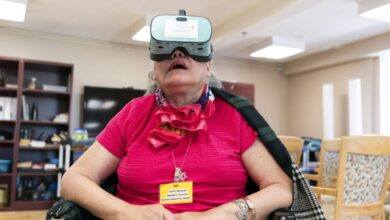Theme parks bounced back from pandemic lows in 2022 with revenue, if not visitor numbers

ORLANDO, Fla. (AP) — Last year marked a return to normal for the theme park industry around the world, with operators reporting revenue, and in some cases attendance numbers, at or above pre-pandemic levels, according to a new report.
Globally, the theme park industry peaked in 2019, the year before the spread of the COVID-19 virus forced many parks and attractions to temporarily close and then reopen with access restrictions.
Many operators focused on improving visitor experiences by adapting app-based technologies and that paid off with revenues in 2022 surpassing 2019 levels, even if visitor numbers had not bounced back in the same way, according to the report released Wednesday by the Themed Entertainment Association and AECOM, the design and engineering firm.
“The pandemic has revealed a sophisticated consumer base willing to pay more for entertainment and experiences away from home. However, consumers are also demanding more in terms of comfort, convenience, quality and satisfaction,” the report said. “General tolerance for large crowds and long waiting times seems to have diminished.”
The theme parks also found ways to add days for lucrative special events that attracted local visitors, such as Halloween celebrations at Universal, Six Flags, and Cedar Fair parks. In Orlando, Florida, the theme park capital of the US, attendance was driven by domestic visitors rather than international travelers, a segment hit by travel restrictions during the height of the pandemic. The new Super Nintendo World brought more visitors to Universal Studios Japan, the report said.
The Magic Kingdom at Walt Disney World outside Orlando was the most visited park last year with more than 17.1 million guests, up more than a third from 2021, but still less than the 20.9 million visitors in 2019 .
Rounding out the top 5 most visited theme parks: Disneyland in Anaheim, California, with 16.8 million visitors, almost double the number of visitors in 2021, but still below 18.6 million visitors in 2019; Tokyo Disneyland with 12 million visitors, nearly double last year’s number, but still only about two-thirds of 2019 attendance; Tokyo DisneySea with 10.1 million visitors, an increase of three quarters compared to 2021 but still two thirds less than in 2019; and Universal Studios Japan with 12.3 million visitors, which more than doubled from 2021, but still fell short of 2019’s 14.5 million visitors.




